Have you heard of the pandan plant? Chances are if you have eaten a South-East Asian meal you have already tasted it, and perhaps unknowingly savoured it. Referred to flatteringly as “vanilla of the East”, pandan is an essential ingredient in many Asian cuisines.
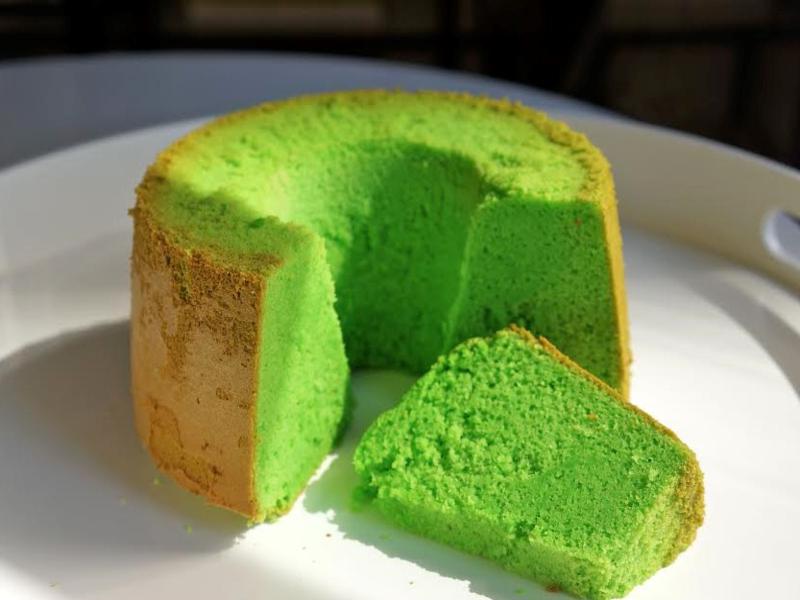
Pandan cake is a delicious treat.
In Thailand pandan often accompanies chicken dishes, in Malaysia it is used to flavour rice, and in Indonesia it is ubiquitous in cakes and desserts. In fact, there are culinary classes on the Indonesian island of Bali dedicated to teaching foreign visitors the importance and uses of the pandan plant in local cuisine.
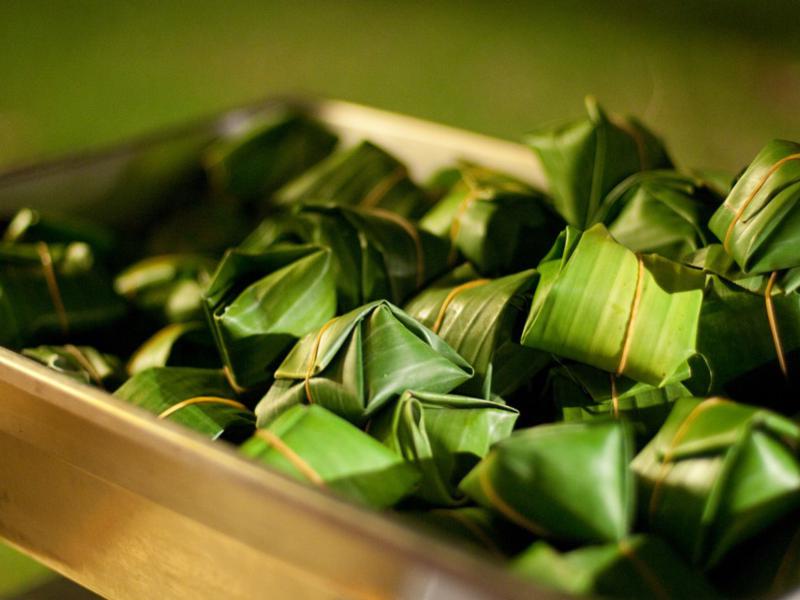
Pandan leaf tied around sticky rice. Photo: CC Flickr.
What is it about this plant that makes it so sought-after in the garden around the world? The unique, distinctly Asian flavour combines perfectly with other oriental kitchen essentials such as coconut milk, turmeric and palm sugar. In South-East Asia, pandan leaf is used to wrap chicken, meat, fish, rice and desserts before they are barbecued or steamed. It adds a distinct sweet taste to dishes, drinks and desserts.
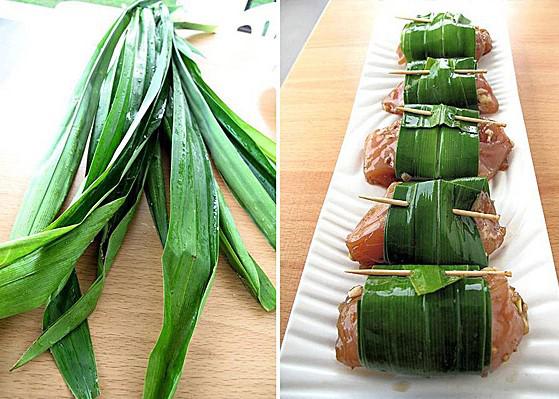
Pandan leaves are used to wrap and flavour fried chicken in Thailand.
Interestingly, a key characteristic of pandan is its deep green hue, and this colour is often intentionally sought to colour pandan-based desserts and drinks. Does this conjure up memories of tasting sweet and green concoctions overseas? The taste is unforgettable, and although pandan essence and colouring is available for cooks who don’t want to spend time extracting the colour from the leaves themselves, there is a status afforded to those who manage to not only find but actually grow the plant outside the tropics. Pandan is the prized crown in any serious gardener’s herb patch.
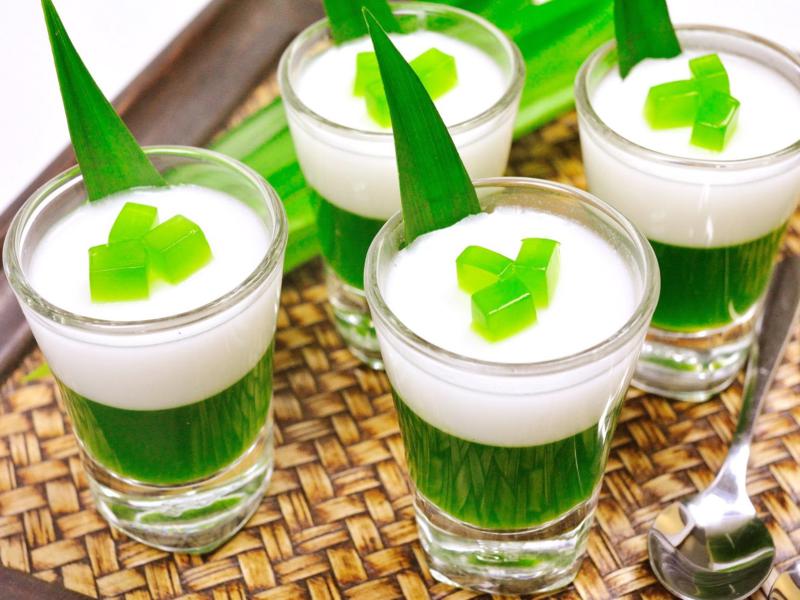
Pandan and coconut jelly.
Pandan, Pandanus amaryllifolius, is a tropical plant native to Malaysia in the Pandanus (screwpine) genus. It is related to the big pandanus trees commonly seen at Australian beaches throughout the warmer parts of the country. The leaves are long, ribbed and lance-shaped and as a garden specimen it has a unique appearance, somewhat like a spiky yucca plant of only about a metre tall. To the casual observer it would not be out of place surrounded by succulents.
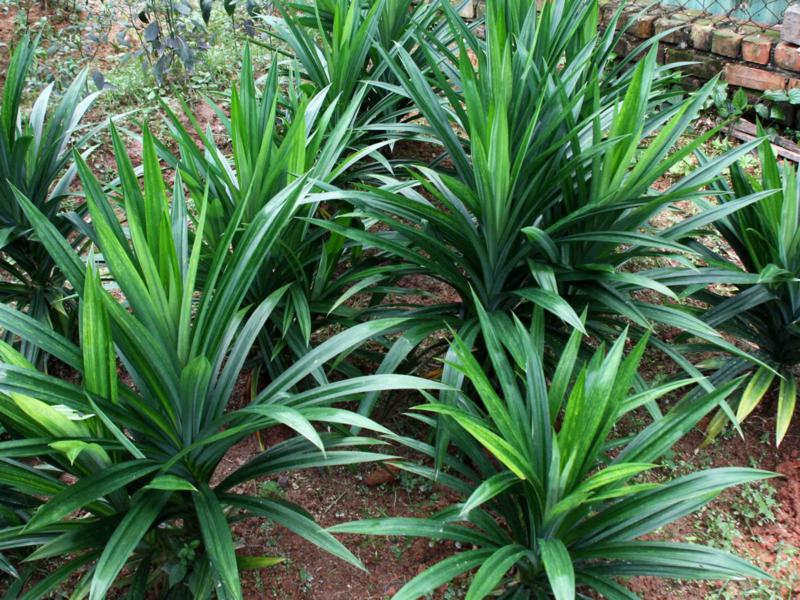
Pandan plants in the garden.
Compare this description to the delicate, climbing orchid that is the vanilla plant (which looks every bit as exotic and unique as the flavour it produces) and it could be said that pandan looks deceptively hardy for such a delicate and difficult to find plant. The plant itself reproduces by suckers and off-shoots and will grow many aerial roots, making propagation from cuttings the preferred (and easiest) method of enlarging your collection.
While many long to have a pot of this exotic herb in the garden for a continuous supply of the appetising fresh foliage, growing pandan outside an equatorial climate can be quite the challenge. There are a few tricks that are well worth the challenge for any serious collector of coveted herbs and exotic plants.
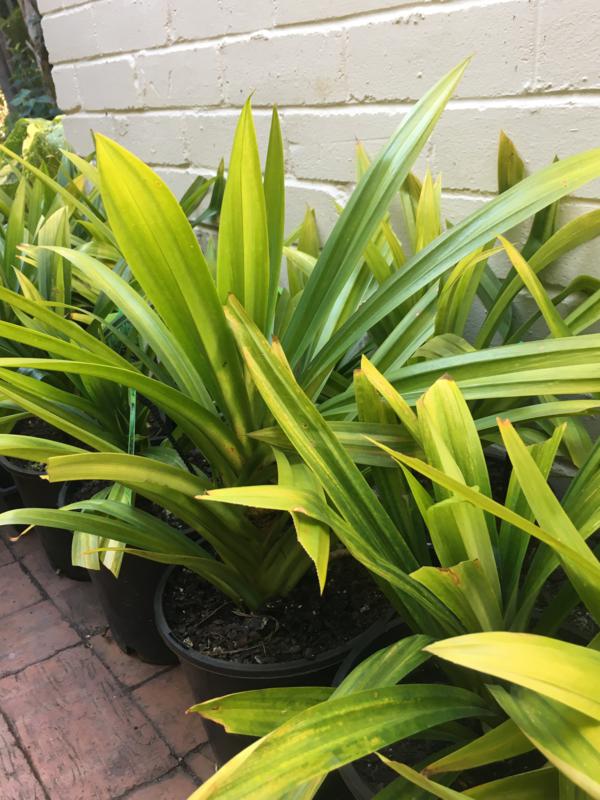
My pandan plants growing in Sydney.
Growing conditions
One of the biggest challenges for growers of pandan is keeping the plant alive in a cooler climate. Despite this, the popularity of it in cooler regions has not waned. I have grown and sold pandan for years in Sydney, and over that time have learned some tricks essential for growing this plant so far from its comfort zone.
Unlike other tropical herbs which adapt so well to cooler climates (think lemon grass, thai basil and turmeric) pandan is a true tropical. It demands a hot, steamy climate with copious humidity and moisture. In these circumstances the plant thrives and multiplies at a rapid rate. Consequently, many of my customers who are used to growing pandan in equatorial regions often express bewilderment at the difference of growth rate here in Sydney.
While the plant powers along in the warmer months, growth in the cooler months grinds to a halt and foliage can sometimes yellow. This is normal, and I remind people that this is how the plant adapts to the cooler weather. It is also important to keep the plant fairly dry during the cooler months, and never let water sit in the crown as it will get cold and eventually rot the plant. As with most tropicals during winter, it is far easier to be cold and dry than cold and wet (the latter spelling a certain death for most warm-climate plants pushed outside of their comfort zone).
While pandan is sensitive to temperature it is not fussy with soil and any nitrogen-based fertilizer will suit, applied at regular intervals during the warmer months. I have had best results by imitating a tropical climate – dry during the cooler months and no fertilizer. In summer I bombard the plant with water and food, thus imitating the wet season of the tropics and resulting in rapid, healthy and dense growth.
It is also helpful to keep the plant in a partly-shaded position, with more sun preferred during cooler weather.
Here is another tip: plant it in a black plastic pot, not a thick-walled decorative glazed or terracotta pot. The black plastic absorbs heat and will keep the plant a few degrees warmer over winter.
Sourcing pandan plants can be a challenge, even within tropical areas of Australia. For all regions, I recommend trying to find a local supplier over mail-order plants. I have supplied plants both ways, locally-grown in Sydney and via mail order from Darwin. Quite simply, the larger the plant the more cold tolerance they have, and anything ordered via post will tend to be smaller and therefore weaker. Additionally, locally grown plants will have far more tolerance of local weather, and therefore you avoid the plant going into shock when sent from a different climate.
Another factor to remember is that a larger plant can be harvested straight away for cooking, while smaller plants will need some time to achieve the size necessary to be useful in the kitchen.
Using pandan
When harvesting pandan leaves, it is important to pick the older leaves at the bottom of the plant first. These are often dark green and contain the richest concentration of fragrance and taste. The younger leaves will help the plant grow and photosynthesize, and long-term harvesting of the newest leaves will result in a stunted, weaker plant.
After picking the fresh leaves, tie them in knots and use to flavour dishes (the leaves themselves are then discarded and not usually eaten). The resulting aroma and mouth-watering flavour from the foliage is unmistakable.
Outside the tropics, growing pandan successfully is certainly a status symbol and a source of envy from other growers of edible plants. Having a supply of fresh leaves is almost always considered preferable to pandan essence, or frozen and thawed leaves. Fresh leaves are sometimes available from markets, but tend to have a short shelf life.
A fresh pot of pandan in the garden is for many people something that goes beyond that of an edible herb – it represents a deeper connection to the authentic cuisines of Asia and something that is hard to imitate outside the region. For those not culinary-inclined, pandan leaves make a delicious tea and the scent of the plant is said to repel roaches, so you can try folded leaves in cupboards and around doorways.
Lastly, a pandan leaf folded under a pillow is said to induce a good night’s sleep – yet another reason to indulge in the plant so often dubbed “Asia’s vanilla”.
